

แทงบอลออนไลน์ เว็บแม่ UFABET สล็อตเว็บตรง ทางเข้า ไม่ผ่านเอเย่นต์ 2025
UFABET เว็บแทงบอลเว็บตรง ที่ต้องลองในปี 2025 อย่าพลาดเข้ามาทดลองใช้บริการกับเรา ทางเข้าพนันบอลออนไลน์ที่เพิ่งอัปเดตใหม่ล่าสุด มาพร้อมเทคโนโลยีล้ำสมัยที่จะยกระดับประสบการณ์เดิมพันของคุณให้เหนือกว่าเว็บอื่น ๆ ด้วยบริการแทงบอลออนไลน์ที่ครบวงจร ตอบโจทย์ทุกความต้องการของนักเดิมพันอย่างดีเยี่ยม ได้รับการแนะนำอย่างแพร่หลายว่าเป็นเว็บพนันบอลที่ดีที่สุด มั่นใจได้ว่าการเดิมพันกับเรานั้นจะได้รับเงินจริง 100% เนื่องจากเราเป็นเว็บตรงที่มีชื่อเสียงมายาวนานและมีฐานลูกค้าหลักล้านทั่วประเทศแทงบอลออนไลน์ บอลสด ไลฟ์บอล ต้อง UFABET แหล่งรวมคอบอล คนรักเดิมพันกีฬา ชอบดูกีฬาแบบสดๆใหม่กว่าใคร ชมคัดไม่มีสะดุดตลอด 24 ชั่วโมง ด้วยรูปแบบการดูบอลสดแบบคมชัด สด ใหม่ ครบจบทุกแมทซ์ทุกเกมส์ ดูบอลสดไม่ดีเลย์ ทำให้คอบอลมีความสนุก ถึงใจครบเครื่องเรื่องกีฬา ไม่ว่าจะเดิมพันกีฬา สปอร์ตเบ็ท ดูบอลสดผ่านมือถือฟรี จึงเกิดเป็นกระแสนิยมทั่วโลก UFABET เว็บดูบอลออนไลน์ ที่ได้รับความนิยมอันดับต้นๆของไทย และยังได้รับความไว้วางใจจากผู้ชมคอบอลหลายๆท่านอีกด้วย ดูบอลสด บนมือถือ ส่งตรงถึงผู้ชมทุกคน และที่สำคัญเว็บไซต์ดูบอลสดของเรายังสามารถรับชมได้ง่าย ๆ ในทุกอุปกรณ์ของคุณ ไม่ว่าจะเป็น คอมพิวเตอร์, สมาร์ตโฟนอีกด้วย ดูได้ทุกรุ่นทุกยี่ห่อไม่ว่าจะเป็น Window, MacOS, IOS, Andriod, TV ถือว่าได้เป็นแพลตฟอร์มที่ครบจบในที่เดียวเลยก็ว่าได้
สล็อตเว็บตรง UFABET ค่ายเกมสล็อตยอดนิยม ค่ายเกมสล็อตที่ได้รับความนิยมอย่างสูงในวงการคาสิโนออนไลน์ ด้วยการนำเสนอเกมสล็อตที่มีคุณภาพสูง ภาพกราฟิกสวยงาม และ ฟีเจอร์สุดพิเศษที่ทำให้ผู้เล่นเพลิดเพลิน ทาง เข้า สล็อต UFABET เว็บ ตรง เช่น สล็อตแนวผจญภัย, สล็อตธีมแฟนตาซี หรือแม้แต่สล็อตแนวตำนาน ที่มาพร้อมกับ ฟีเจอร์โบนัส และ ฟรีสปิน ที่ช่วยเพิ่มโอกาสในการทำกำไร สล็อตเว็บตรง ไม่ผ่านเอเย่นต์ ให้บริการเกม สล็อตออนไลน์ โดยเชื่อมต่อจากแพลทฟอร์มหลัก ไม่ผ่านตัวแทนหรือเอเย่นต์ใดๆ เป็น เว็บคาสิโนออนไลน์ มาตรฐานสากล มีความโปร่งใส และยุติธรรม สล็อตเว็บตรง ฝากถอนวอเลท เว็บสล็อต ไม่ผ่านเอเย่นต์ อันดับ 1 เว็บ คาสิโนออนไลน์ ให้บริการโดยตรงจากผู้ให้บริการหลักโดยไม่ต้องผ่านเอเย่นต์ ทำให้มั่นใจได้ว่าการเดิมพันจะโปร่งใสและได้มาตรฐาน จาก สล็อตเว็บตรง ที่มีคุณภาพสูง พร้อมระบบให้บริการทันสมัยที่สุดในไทย เราถูกออกแบบให้ผู้เล่นทุนน้อยก็เล่นสล็อตได้ รองรับการใช้งานผ่าน สล็อตวอเลท ไม่มีขั้นต่ำในการฝาก-ถอน ปั่นสล็อต มีโอกาสแตกสูง เราเป็น เว็บสล็อตแตกง่าย การันตีทำกำไรได้จริงจาก เว็บตรงสล็อต ของเรา
เว็บแทงบอลเว็บตรง ที่ต้องลองในปี 2025 อย่าพลาดเข้ามาทดลองใช้บริการกับเรา ทางเข้าพนันบอลออนไลน์ที่เพิ่งอัปเดตใหม่ล่าสุด มาพร้อมเทคโนโลยีล้ำสมัยที่จะยกระดับประสบการณ์เดิมพันของคุณให้เหนือกว่าเว็บอื่น ๆ ด้วยบริการแทงบอลออนไลน์ที่ครบวงจร ตอบโจทย์ทุกความต้องการของนักเดิมพันอย่างดีเยี่ยม ได้รับการแนะนำอย่างแพร่หลายว่าเป็นเว็บพนันบอลที่ดีที่สุด มั่นใจได้ว่าการเดิมพันกับเรานั้นจะได้รับเงินจริง 100% เนื่องจากเราเป็นเว็บตรงที่มีชื่อเสียงมายาวนานและมีฐานลูกค้าหลักล้านทั่วประเทศแทงบอลออนไลน์ สนุกได้ทุกแมทซ์ เล่นได้ทุกลีก ครบจบในเว็บเดียว ยินดีต้อนรับสู่การ แทงบอลออนไลน์ ซึ่งเปิดรับการเดิมพันจากทั่วทุกมุมโลก เรามีตัวเลือกในการแทงบอลที่ครบครันสำหรับทุกการแข่งขัน ส่งตรงจากสนามในทุกแมตช์ ให้คุณสามารถเลือกแทงทีมโปรดได้ครบจบในที่เดียว โดยไม่ต้องสลับเว็บไซต์อีกต่อไป สมาชิกสามารถเลือกวิธีการแทงบอลที่หลากหลายตามความชอบและความถนัดของแต่ละคนสล็อตเว็บตรง 100% ใช้ API แท้ จากต่างประเทศ เว็บสล็อต ของเรานำเข้า API แท้จากผู้ให้บริการต่างประเทศโดยตรง สล็อตเว็บตรง เว็บแท้ 100% รับประกันความปลอดภัยและความโปร่งใสในการเดิมพัน ระบบ API ฝากถอนรองรับทุกช่องทาง อำนวยความสะดวกให้ผู้เล่นทำธุรกรรมได้ง่ายและรวดเร็ว เราใช้ API แท้ ไม่มีการปรับแต่งอัตราชนะ เล่น สล็อต ได้จริง จ่ายเต็ม มั่นใจได้กับมาตรฐาน API ระดับสากลที่ได้รับการรับรองจากองค์กร คาสิโนออนไลน์ ชั้นนำ
เว็บแม่ UFABET ยังมีระบบฝากถอนอัตโนมัติที่ได้รับการยอมรับว่ามีความปลอดภัยสูงสุด คุณสามารถดำเนินการธุรกรรมทางการเงิน ไม่ว่าจะเป็นการฝากหรือถอนเงิน ได้อย่างอิสระและรวดเร็วโดยไม่ต้องผ่านคนกลาง ระบบที่ออกแบบมาเพื่อรองรับการใช้งานที่ง่ายและมีประสิทธิภาพ ทำให้การจัดการเงินของคุณเป็นเรื่องง่ายและปลอดภัย หมดกังวลเรื่องการถอนเงินไม่สำเร็จ เพราะเรามีระบบที่มั่นคงและเชื่อถือได้ พร้อมให้บริการตลอด 24 ชั่วโมงทางเข้า แทงบอล ไม่มีขั้นต่ำ เล่นผ่านมือถือ ระบบเสถียร หากคุณหลงใหลในการแทงบอลกับเว็บชั้นนำ คุณไม่ควรพลาดโอกาสนี้ สล็อตเว็บตรง ระบบอัตโนมัติ ฝาก-ถอนง่าย มีทรูวอเลท ไม่มีขั้นต่ำ มาพร้อมกับระบบ ทรูวอเลท ฝาก-ถอน อัตโนมัติไม่มีขั้นต่ำ ไม่ต้องมีบัญชีธนาคาร ก็เล่น สล็อต ได้ง่ายๆ ไม่ต้องกังวลเรื่องเงินทุน ด้วยบริการแบบมืออาชีพจาก เว็บสล็อตแท้ รับวอเลท ของเราที่มั่นใจว่าในทุกๆขั้นตอนการเล่นกับ สล็อตเว็บตรง การทำรายการจะเป็นไปอย่างราบรื่น ใช้งานได้ตลอด 24 ชั่วโมงเว็บไซต์ แทงบอล ที่กำลังได้รับความนิยมสูงสุดในแวดวง แทงบอลออนไลน์ มอบโอกาสให้ทุกคนได้สัมผัสกับประสบการณ์การเดิมพันที่ยอดเยี่ยม คุณสามารถเริ่มเดิมพันตั้งแต่ 2 คู่ไปจนถึง 12 คู่ ด้วยการลงทุนขั้นต่ำเพียง 5 บาทเท่านั้น ระบบการฝากถอนเงินที่ไม่มีข้อจำกัด ทำให้การเริ่มต้นเพียง 10 บาทก็เพียงพอ และการทำธุรกรรมรวดเร็วเพียงไม่กี่วินาที เงินก็จะถูกเพิ่มเข้าสู่บัญชีทันที พร้อมให้คุณเดิมพันได้อย่างเต็มที่ทุกเวลาแทงบอลออนไลน์เว็บแม่ UFABET 2025 มีข้อได้เปรียบมากมาย เช่น ความสะดวกและรวดเร็ว ระบบออนไลน์ที่ใช้งานง่าย ช่วยให้คุณสามารถเดิมพันได้ทุกที่ทุกเวลาโดยไม่ต้องออกจากบ้าน อัตราต่อรองที่ยอดเยี่ยม เรามอบค่าน้ำที่ดีที่สุด ซึ่งเพิ่มโอกาสในการทำกำไรมากขึ้น ความปลอดภัย เว็บไซต์ของเรามีมาตรการรักษาความปลอดภัยที่เข้มงวด เพื่อปกป้องข้อมูลส่วนตัวและการทำธุรกรรมทางการเงินของคุณ
ข่าวกีฬา ข่าวบอล วอลเลย์บอล สดทุกชนิดกีฬา ที่สุดข่าวกีฬาวันนี้
เกมกีฬาในวันนี้
El Nacional – Delfín
SV Estrella Papilon – SV La Fama Savaneta
Valour FC – HFX Wanderers FC
Houston Dash – Kansas City Current
Orlando Pride – Angel City FC
Vila Nova – Chapecoense
CS St-Hubert – FC Laval
Darby FC – Hamilton United
Defence Force FC – Morvant Caledonia United
OLD Road Jets – St Pauls United
CD Villa Real Sociedad – CD Real Kateri
Atletico Morelia UMSNH – Michoacán FC
Éclair – FAM
San Martin de Mendoza – Huracán Las Heras
US Baie-Mahault – CS Moulien
L'Etoile de Morne-à-L'eau – AS Moule
Leones FC – Cúcuta Deportivo
Universidad Católica – Everton de Viña del Mar
CS Montréal Centre – FC Boréal
Western Suburbs FC – Waterside Karori
Nelson Suburbs FC – Cashmere Technical
Guabirá – CD Real Tomayapo
Club Universitario de Tarija – CA Ciclón
Island Bay United – Napier City Rovers
GHUPO FC – FC Southern United Honiara
Renco FC – Black River Naisu
CF Cadereyta – Irritilas FC
San Francisco FC – CA Independiente de la Chorrera
La Piedad Imperial – Bucaneros FC
Municipal Santa Ana – Santos de Guápiles
CA 31 de Julio – CD Kivon
Veertien Mie FC – FC Imabari
Tigres UANL – Monterrey
Launceston City FC – Ulverstone FC
Launceston United FC 2 – Devonport City SC 2
North Wellington AFC – Wellington Olympic
Upper Hutt City FC – Miramar Rangers
Wellington Phoenix Reserve – FC Petone
Auckland United FC – East Coast Bays
Birkenhead United – Tauranga City AFC
Eastern Suburbs – Manurewa AFC
Juniper FC – Central Coast Honiara
Seisa Osa Reia Shonan FC – FC Fujizakura Yamanashi
Edgeworth Eagles – Newcastle Olympic
Nittaidai FC – Yokohama FC Seagulls
Singleton Strikers FC – Thornton Redbacks FC
South Hobart FC 2 – Taroona
Green Gully U21 – South Melbourne FC U21
Heidelberg United FC U21 – Avondale U21
Kibi International University – Diosa Izumo FC
Seoul Jungang FC – Jinju Citizen FC
Riverside Olympic – Glenorchy Knights
Launceston United – Devonport Strikers
Burnie United – Somerset
New Town Eagles SC – Beachside FC
South East United FC – University of Tasmania
Brisbane Roar – Wellington Phoenix
SKA-Khabarovsk – Enisey Krasnoyarsk
North Sunshine Eagles SC – Western United Reserves
Brisbane Roar QAS – Gold Coast Knights
Campbelltown City SC – Adelaide Comets FC
Suwon FC – Jeonbuk Hyundai Motors
Central Coast United FC – Hawkesbury City FC
Kashiwa Reysol – Albirex Niigata
FC Jumonji Ventus – Sanfrecce Hiroshima Regina
Mynavi Vegalta Sendai – Urawa Red Diamonds
Nojima Stella Kanagawa Sagamihara – JEF United Ichihara Chiba
Renofa Yamaguchi FC – FC Imabari
Tokushima Vortis – Kataller Toyama
Essendon Royals SC – Alamein United FC
Moreland Zebras – Heidelberg United SC
Giravanz Kitakyushu – Matsumoto Yamaga FC
Cheonan City FC – Cheongju FC
Seoul E-Land FC – Gyeongnam FC
Busan Transportation Corporation – Pocheon FC
Chuncheon FC – Daejeon Korail
Paju Citizen FC – Gimhae City FC
Yeoju Citizen FC – Jeonbuk FC II
Dangjin Citizen – Pyeongchang United
Seoul Jungang FC – Jinju Citizen FC
Cooma Tigers – Gungahlin United
Anu FC – Brindabella Blues FC
Canberra Juventus FC – Wagga City Wanderers
Canberra Olympic – Belconnen United
Canberra White Eagles FC – West Canberra Wanderers
Collingwood City FC – Mornington
Doveton SC – South Springvale SC
Gippsland United – Beaumaris SC
Hampton East Brighton FC – Brandon Park SC
Mazenod United FC – Malvern City FC
Old Scotch SC – Bayside Argonauts FC
NWS Spirit – Sydney Olympic FC
Diavorosso Hiroshima – Bunnys Gunma FC White Star
Nankatsu SC – Yamato Sylphid
Dangjin Citizen – Pyeongchang United
AS Central Sport – AS Manu-Ura
AS Tefana – AS Dragon
ANU FC – Brindabella Blues FC
Canberra White Eagles – West Canberra Wanderers
Brimbank Stallions FC – Upfield SC

สารบัญ
เว็บตรงแทงบอล ยูฟ่าเบท ระบบออโต้ เว็บบอล มาตรฐานสากล
ยูฟ่าเบท (UFABET) เว็บหลัก เว็บแม่ กำลังได้รับความนิยมมาแรงมากที่สุดในปี 2025 ด้วยสถานะ เว็บแทงบอลออนไลน์ อันดับ 1 ที่เป็นมาตรฐานระดับสากล เรารวบรวมมาไว้ให้แก่นักเดิมพันทุกท่านแล้วในวันนี้ ด้วยบริการ ฝาก-ถอนไม่มีขั้นต่ำ เริ่มต้นเพียง 5 บาท พร้อม ราคาน้ำดีที่สุด เช่น ค่าน้ำ 1.84 สูงกว่าเว็บอื่น 0.04 จุด การแทงบอลสูงสุด 2-12 คู่ ในยูฟ่าเบท เว็บแม่ ช่วยให้นักพนันสร้างรายได้แบบทวีคูณด้วยอัตราต่อรองแม่นยำ แทงบอลสเต็ปที่สามารถเดิมพันได้มากถึง 12 คู่ โดยใช้ ufabet ทางเข้า ผ่านมือถือได้ทุกอุปกรณ์ สำหรับเกมกีฬาที่มาแรงมากที่สุดในประเทศไทย เรามีระบบ แทงบอลสด แบบเรียลไทม์พร้อมสถิติอัปเดตทุก 10 วินาที เว็บบอลออนไลน์ UFABET ให้บริการความสนุกแบบครบวงจร ด้วยการรวม เกมกีฬาที่มาแรงมากที่สุดในประเทศไทย ไว้แบบครบครันในที่เดียวกับ ufabetเว็บตรง ไม่ว่าจะเป็น แทงบอลสด พร้อมสตรีมมิ่งภาพคมชัด Full HD สมัครufa วันนี้รับทันทีเครดิตฟรี 100% พร้อมรับโบนัสคาสิโนเพิ่ม 15% ข้อมูลส่วนตัวได้รับการปกป้องอย่างเต็มที่ นักพนันสามารถ เล่นได้ไม่อั้น ทุก 24 ชั่วโมงผ่านระบบ AI
ระบบแทงบอลสดอัปเดตข้อมูลแบบเรียลไทม์ทุก 0.5 วินาที พร้อมสถิติการแข่งขันและกราฟวิเคราะห์ช่วยตัดสินใจ เกมกีฬาที่มาแรงมากที่สุดในประเทศไทย อย่างมวยไทยและมวยสากลก็มีให้เลือกเดิมพันแบบไลฟ์สด ผ่านมาตรฐานระดับสากลสำหรับนักเดิมพันใหม่ สมัครตอนนี้รับทันทีเครดิตฟรี 100% ของยอดฝากแรกสูงสุด 5,000 บาท พิเศษสุดกับโปรโมชั่นแทงบอลสเต็ป รับโบนัสเพิ่ม 5% ทุกสัปดาห์เมื่อทำยอดเดิมพันครบ 10,000 บาท ระบบแนะนำการเดิมพันจากกูรูมืออาชีพช่วยเพิ่มโอกาสชนะรางวัลใหญ่ยูฟ่าเบท ทางเข้า ล่าสุดอัปเดตปี 2025 รองรับการเล่นได้ไม่อั้นผ่านทั้งคอมพิวเตอร์/สมาร์ทโฟน/แท็บเล็ต โดยไม่ลดประสิทธิภาพการทำงาน ฟีเจอร์พรีวิวเกมช่วยชมตัวอย่างการแข่งขันก่อนเริ่มแมตช์จริง พร้อมระบบแจ้งเตือนอัตโนมัติเมื่อมีการเปลี่ยนแปลงอัตราต่อรอง

แทงบอล ufabet (แทงบอลออนไลน์) รูปแบบการเดิมพันหลากหลาย
รูปแบบการเดิมพันหลากหลายของ ufabet ยังรวมถึงฟีเจอร์พิเศษเช่น การเดิมพันแบบครึ่งเวลา/เต็มเวลา การทายผลผู้ทำประตูแรก และการเดิมพันแบบผสมผสานระหว่างกีฬาประเภทต่างๆ นักพนันสามารถสร้างสรรค์กลยุทธ์การเดิมพันได้อย่างอิสระตามความชำนาญการแทงบอล ufabet (แทงบอลออนไลน์) เป็นรูปแบบการเดิมพันที่หลากหลายและตอบโจทย์นักพนันยุคใหม่ ด้วยบริการแทงบอลออนไลน์ครบวงจรผ่าน ufabet เว็บตรง ที่มาพร้อมระบบฝาก-ถอนอัตโนมัติแบบเรียลไทม์ รองรับการเดิมพันได้ทุกอุปกรณ์ทั้งคอมพิวเตอร์ สมาร์ทโฟน และแท็บเล็ต โดยไม่ต้องดาวน์โหลดแอปพลิเคชันรูปแบบการเดิมพันหลากหลายของ ufabet ครอบคลุมทุกความต้องการ ตั้งแต่การแทงบอลเดี่ยวแบบพื้นฐานไปจนถึงบอลสเต็ปสูงสุด 12 คู่ พร้อมอัตราค่าน้ำแข่งขันที่ให้ผลตอบแทนสูงกว่าเว็บทั่วไป ตัวอย่างเช่น การเดิมพันแบบแฮนดิแคปที่ช่วยปรับสมดุลการแข่งขันระหว่างทีมที่มีความแตกต่างด้านความแข็งแกร่งอย่างชัดเจน หรือการทายผลสกอร์แบบแม่นยำที่ให้อัตราจ่ายสูงเป็นพิเศษ
- แทงบอลเดี่ยว (Single Bet) - การเดิมพันผลการแข่งขันแบบทีมต่อทีม
- บอลสเต็ป (Parlay Bet) - รวมการเดิมพันหลายคู่ในตicketเดียว
- แฮนดิแคป (Handicap) - การปรับแต้มต่อเพื่อสร้างความเท่าเทียม
- สูง/ต่ำ (Over/Under) - การทายผลรวมประตูในแมตช์
- ทายสกอร์ (Correct Score) - การทำนายผลคะแนนแบบเจาะจง
- บอลสด (Live Betting) - การเดิมพันแบบเรียลไทม์ระหว่างแข่ง
ufabet ทางเข้า ที่ออกแบบมาอย่างทันสมัยรองรับการใช้งานผ่านมือถือทุกระบบ ทั้ง iOS และ Android ด้วยระบบรักษาความปลอดภัย SSL มาตรฐานสากล ช่วยป้องกันข้อมูลส่วนตัวและธุรกรรมทางการเงิน ผู้ใช้สามารถเดิมพันได้อย่างมั่นใจแม้ในเกมการแข่งขันสำคัญระดับโลกอย่างพรีเมียร์ลีกหรือฟุตบอลโลกบริการ แทงบอล ออนไลน์ของ ufabet โดดเด่นด้วยระบบเงินฝาก-ถอนอัตโนมัติที่เร็วที่สุดในวงการ เริ่มต้นฝากขั้นต่ำเพียง 20 บาท โดยไม่มีค่าธรรมเนียมและไม่จำกัดจำนวนครั้งต่อวัน ใช้เทคโนโลยี AI ในการประมวลผลธุรกรรมภายในไม่กี่วินาที รองรับช่องทางธนาคารหลักทุกแห่งในประเทศไทย มาแนะนำตัวอย่างการแทงบอลออนไลน์ยอดนิยมให้แก่นักเดิมพันกัน สำหรับมือใหม่แนะนำเริ่มจากบอลเดี่ยวก่อน โดยเลือกคู่แข่งขันจากลีกดังอย่างพรีเมียร์ลีกอังกฤษ วิเคราะห์รูปแบบทีมและสถิติล่าสุด จากนั้นกำหนดจำนวนเงินเดิมพันตามงบประมาณ เมื่อชนะเดิมพันจะได้รับเงินรางวัลทันทีเข้าบัญชี
ufabet เว็บตรง มอบประสบการณ์การเล่นแบบพรีเมียมด้วยคุณสมบัติเหล่านี้:
- ระบบแจ้งเตือนผลการแข่งขันและอัตราต่อรองล่าสุด
- แดชบอร์ดแสดงประวัติการเดิมพันแบบเรียลไทม์
- เครื่องมือคำนวณเงินรางวัลอัตโนมัติทุกประเภทการเดิมพัน
- แผนภูมิวิเคราะห์สถิติทีมและนักเตะแบบละเอียด
- บริการลูกค้าตลอด 24 ชั่วโมงผ่านช่องทางแชทสด โทรศัพท์ และอีเมล พร้อมทีมงานมืออาชีพที่ให้คำปรึกษาทุกขั้นตอนการเดิมพัน สำหรับสมาชิกใหม่มีโปรโมชั่นพิเศษทั้งเครดิตฟรีและโบนัสคืนยอดเสีย สร้างโอกาสทำกำไรได้แม้มีทุนน้อย
แทงบอลออนไลน์ UFABET เว็บแทงบอล ราคาน้ำบอลสูงกว่าเจ้าอื่น
แทงบอลออนไลน์ UFABET เว็บแทงบอล ที่ให้ราคาน้ำบอลสูงกว่าเจ้าอื่นอย่างชัดเจน ด้วยอัตราต่อรองที่ดีที่สุดในตลาด เราให้ค่าน้ำ 1.84 ในขณะที่เว็บอื่นให้เพียง 1.80 สำหรับการแข่งขันระดับเดียวกัน เช่น นัดระหว่างเรอัลมาดริดและบาร์เซโลนา การันตีว่าทุกการเดิมพันกับเราจะได้รับผลตอบแทนสูงสุด ราคาน้ำบอลสูงกว่าเจ้าอื่นนี้ทำให้สมาชิกสามารถทำกำไรได้มากกว่าถึง 10-20% เมื่อเทียบกับเว็บพนันทั่วไปเว็บแทงบอล UFABET โดดเด่นด้วยระบบราคาน้ำบอลสูงกว่าเจ้าอื่นในทุกการแข่งขัน ไม่ว่าจะเป็นพรีเมียร์ลีก ลาลีกา บุนเดสลีกา หรือแม้แต่ไทยลีก เรามีทีมงานนักวิเคราะห์มืออาชีพที่คำนวณอัตราต่อรองแบบให้ประโยชน์สูงสุดแก่ผู้เล่น ราคาน้ำบอลสูงกว่าเจ้าอื่นนี้เกิดจากการพัฒนาระบบอย่างต่อเนื่องโดยวิศวกรผู้เชี่ยวชาญ เพื่อให้สมาชิกได้รับประสบการณ์การเดิมพันที่เหนือระดับ
เว็บแทงบอลยูฟ่าเบท เว็บแทงบอลที่ดีที่สุด ราคาน้ำดีที่สุด เราให้ค่าน้ำในการแทงบอลที่สูงกว่าเจ้าอื่นเป็นอย่างมากเราไม่เพียงให้ค่าน้ำดี แต่ยังมีโปรโมชั่นเพิ่มมูลค่าการเดิมพัน เช่น โบนัส 5% สำหรับการแทงบอลสเต็ป 5 คู่ขึ้นไป ทำให้สมาชิกได้รับผลตอบแทนทวีคูณมากกว่าเว็บทั่วไปถึง 2 เท่าระบบฝาก-ถอนออโต้ของเรารองรับการเดิมพันราคาน้ำบอลสูงกว่าเจ้าอื่นได้อย่างเต็มประสิทธิภาพ คุณสามารถฝากเงินขั้นต่ำ 20 บาทและเริ่มแทงบอลได้ทันทีภายใน 30 วินาที พร้อมถอนเงินได้ไม่จำกัดจำนวนครั้งต่อวัน โดยไม่มีค่าธรรมเนียมใดๆ ทั้งสิ้น ความรวดเร็วนี้ช่วยให้คุณไม่พลาดโอกาสเดิมพันในราคาน้ำดีที่สุดแทงบอลออนไลน์กับ UFABET ที่รวมทุกความได้เปรียบไว้ในที่เดียว ทั้งราคาน้ำบอลสูงกว่าเจ้าอื่น บริการ 24 ชั่วโมง และเทคโนโลยีล้ำสมัย เว็บแทงบอลแห่งนี้พร้อมให้คุณเปรียบเทียบราคาน้ำบอลสูงกว่าเจ้าอื่นได้ด้วยตัวเองผ่านระบบ Live Odds Comparison ที่อัปเดตแบบเรียลไทม์ ดูสถิติการเปลี่ยนแปลงราคาน้ำทุก 10 วินาที พร้อมกราฟวิเคราะห์แนวโน้มการเดิมพัน ช่วยตัดสินใจวางเดิมพันได้แม่นยำยิ่งขึ้นสมัครวันนี้เพื่อสัมผัสประสบการณ์แทงบอลออนไลน์กับราคาน้ำบอลสูงกว่าเจ้าอื่นแบบไม่มีที่ติ เราให้คุณเปรียบเทียบราคากับเว็บคู่แข่งได้ก่อนเดิมพันจริง พร้อมบริการลูกค้าภาษาไทย 24 ชม. ที่พร้อมอธิบายรายละเอียดอัตราต่อรองทุกนัดทุกการคลิกเดิมพันกับเราคือโอกาสสร้างรายได้จากราคาน้ำบอลสูงกว่าเจ้าอื่น มาพิสูจน์ความแตกต่างด้วยตัวคุณเอง สมัครฟรีไม่เสียค่าใช้จ่าย เริ่มต้นได้ด้วยเงิน 10 บาท และรับเครดิตทดลองเล่นเพื่อสัมผัสความได้เปรียบของอัตราต่อรองแบบพรีเมียมแทงบอลออนไลน์วันนี้ที่ UFABET เว็บแทงบอลแห่งอนาคตที่การันตีราคาน้ำบอลสูงกว่าเจ้าอื่นในทุกการแข่งขัน ตรวจสอบได้ด้วยตาผ่านระบบเปรียบเทียบแบบ Side-by-Sode ก่อนวางเดิมพันจริง รับรองความโปร่งใสและความได้เปรียบที่วัดผลได้จริง
ประเภทการแทงบอล จาก UFA โดยตรงจาก UFABET
การแทงบอลออนไลน์ได้รับความนิยมอย่างแพร่หลายในทุกมุมโลก ไม่เว้นแม้แต่ในประเทศไทย เราได้กลายเป็นตัวเลือกยอดนิยมสำหรับผู้ที่ชื่นชอบการแทงบอล ด้วยความเรียบง่ายในการเล่นและความรวดเร็วในการทำกำไร ผู้เล่นสามารถเพลิดเพลินกับการวางเดิมพันและมั่นใจได้ว่าการถอนเงินเป็นไปอย่างราบรื่นและเชื่อถือได้ เว็บไซต์ของเราขยายการบริการครอบคลุมทั่วทั้งภูมิภาคเอเชีย พร้อมมอบประสบการณ์การใช้งานที่รวดเร็วและมีคุณภาพสูงสุดรูปแบบการแทงบอลในปัจจุบันมีความหลากหลายเพื่อตอบสนองความต้องการของนักเดิมพันที่หลากหลาย ได้แก่ บอลเดี่ยว (Single Bet) การวางเดิมพันในทีมที่คิดว่าจะชนะในการแข่งขันเพียงคู่เดียว บอลสเต็ป (Parlay Bet) การเดิมพันในหลายคู่พร้อมกัน โดยจะต้องทายผลถูกทุกคู่เพื่อรับรางวัล ซึ่งให้ผลตอบแทนสูงกว่าบอลเดี่ยว แฮนดิแคป (Handicap) การเดิมพันที่มีการต่อรองระหว่างทีมที่มีความแข็งแกร่งแตกต่างกัน เพื่อให้การแข่งขันมีความเท่าเทียมมากขึ้น สูง/ต่ำ (Over/Under) การทายผลรวมของคะแนนว่าจะสูงหรือต่ำกว่าค่าที่กำหนนอกจากนี้ยังมีรูปแบบการแทงบอลครึ่งแรก/ครึ่งหลัง (Half-time/Full-time) การเดิมพันผลการแข่งขันในครึ่งแรกหรือเต็มเวลา ทายสกอร์ (Correct Score) การทายผลสกอร์ที่แน่นอนของการแข่งขัน และแทงบอลคู่/คี่ (Odd/Even) การเดิมพันว่าผลรวมของคะแนนจะออกมาเป็นเลขคู่หรือเลขคี่ อัตราการจ่ายเงินรางวัลในการแทงบอลจะแตกต่างกันไปตามประเภทการเดิมพันและความเสี่ยงที่เกี่ยวข้องด
- แทงบอลเต็งหรือบอลเดี่ยว
- แทงบอลชุดหรือบอลสเต็ป
- แทงบอลแบบสูง-ต่ำ
- แทงบอลแบบแฮนดิแคป
- แทงบอลครึ่งแรกและครึ่งหลัง
- แทงบอลแบบ 1X2
- แทงบอลแบบทายผลสกอร์
- แทงบอลแบบคู่-คี่
- แทงบอลสด
การแทงบอลแบบแฮนดิแคป อัตราการจ่ายขึ้นอยู่กับการต่อรองที่กำหนดไว้ โดยค่าน้ำจะสะท้อนถึงความน่าจะเป็นของผลลัพธ์ ส่วนการแทงสูง/ต่ำ ค่าน้ำจะกำหนดอัตราการจ่ายเงิน หากทายถูกจะได้รับตามค่าน้ำที่ระบุ การทายสกอร์มีอัตราการจ่ายสูงเพราะโอกาสทายถูกยากกว่า โดยค่าน้ำจะสูงขึ้นตามความยากของการทายผลUFABET เว็บดูบอลออนไลน์ ที่ได้รับความนิยมอันดับต้นๆของไทย และยังได้รับความไว้วางใจจากผู้ชมคอบอลหลายๆท่านอีกด้วย ดูบอลสด บนมือถือ ส่งตรงถึงผู้ชมทุกคน ด้วยระบบการฝากถอนเงินที่ไม่มีข้อจำกัด ทำให้การเริ่มต้นเพียง 10 บาทก็เพียงพอ และการทำธุรกรรมรวดเร็วเพียงไม่กี่วินาที เงินก็จะถูกเพิ่มเข้าสู่บัญชีทันที
แทงบอลออนไลน์ UFABET เว็บใหญ่ ต่อยอดกำไรได้จริง พร้อมความมั่นคงในระดับสูง
การแทงบอลออนไลน์ UFABET บนเว็บใหญ่ระดับต้นของไทยที่ให้บริการมาอย่างยาวนาน ได้รับความไว้วางใจจากผู้ใช้งานจริงทั่วประเทศ ด้วยระบบการเงินที่มั่นคงและเทคโนโลยีล้ำสมัยช่วยให้ต่อยอดกำไรได้จริง พร้อมความมั่นคงในระดับสูง เว็บไซต์ของเรามีการอัปเดตระบบฝาก-ถอนอัตโนมัติที่เสถียรที่สุดในปัจจุบัน ใช้เวลาเพียงไม่กี่วินาทีเท่านั้น เริ่มต้นเดิมพันขั้นต่ำเพียง 5 บาท รองรับการทำธุรกรรมผ่านทุกช่องทางธนาคารแบบไม่มีขั้นต่ำรูปแบบการแทงบอลออนไลน์ใน UFABET มีให้เลือกมากมายทั้งบอลเดี่ยว บอลสเต็ป 2-12 คู่ แฮนดิแคป สูง/ต่ำ โดยมีอัตราค่าน้ำดีที่สุดในท้องตลาด การแทงบอลสดแบบเรียลไทม์ช่วยเพิ่มโอกาสทำกำไรได้ทุกนาทีของการแข่งขัน พร้อมระบบวิเคราะห์ผลบอลจากกูรูมืออาชีพที่แม่นยำสูงสุด ข้อมูลสถิติอัปเดตแบบเรียลไทม์ช่วยให้ตัดสินใจเดิมพันได้ถูกต้องระบบความปลอดภัยระดับมาตรฐานสากลด้วยเทคโนโลยี SSL Encryption ปกป้องข้อมูลส่วนตัวและธุรกรรมทางการเงินอย่างเต็มรูปแบบ การันตีความน่าเชื่อถือด้วยจำนวนผู้ใช้งานจริงเกิน 100,000 บัญชี ทุกการเดิมพันได้รับการรับรองผลลัพธ์แบบยุติธรรม 100% ไม่มีการปรับเปลี่ยนอัตราต่อกลางคันมาตรฐานการให้บริการระดับพรีเมียมด้วยอัตราความพึงพอใจผู้ใช้ 98.7% จากแบบสำรวจล่าสุด มั่นใจได้ในทุกการลงทุนกับเว็บแทงบอลออนไลน์ที่ใหญ่ที่สุดและมั่นคงที่สุดในเอเชีย
ทางเข้า UFABET สมัครแทงบอล วิธีการเล่น ยูฟ่าเบท ผ่านมือถือ
UFABET เว็บดูบอลออนไลน์ ที่ได้รับความนิยมอันดับต้นๆของไทย ดูบอลสด บนมือถือ ส่งตรงถึงผู้ชมทุกคน ทางเข้า UFABET เข้าสู่ระบบผ่านอุปกรณ์ได้หลากหลายทั้งคอมพิวเตอร์, สมาร์ตโฟน, แท็ปเล็ต โดยเฉพาะการ ดูบอลสดผ่านมือถือฟรี ที่สะดวกสบายคมชัดทุกแมทซ์ สำหรับคอบอลที่ต้องการ สมัครแทงบอล ออนไลน์สามารถเริ่มต้นได้ด้วยขั้นตอนง่ายๆวิธีการเล่น ยูฟ่าเบท ผ่านมือถือ เริ่มจากเข้าสู่ระบบผ่านทางเข้าเล่น UFABET ที่รองรับทั้ง iOS และ Android ระบบออกแบบมาเพื่อใช้งานบนมือถือได้อย่างเต็มประสิทธิภาพ
- ขั้นตอนการสมัครสมาชิก: เข้าสู่หน้าเว็บไซต์หลัก > คลิกปุ่มสมัครสมาชิก > กรอกข้อมูลส่วนตัว > ตั้งชื่อผู้ใช้/รหัสผ่าน > ยืนยันตัวตนผ่าน SMS หรืออีเมล > ผูกบัญชีธนาคาร
- ระบบฝาก-ถอนอัตโนมัติ: ฝากขั้นต่ำ 20 บาท ใช้เวลาไม่กี่วินาที ถอนเงินได้ไม่จำกัดจำนวนต่อวันผ่านโมบายแบงกิ้ง รองรับทุกธนาคาร
- รูปแบบการแทงบอล: บอลเดี่ยว/สเต็ป/สูง-ต่ำ/แฮนดิแคป/ทายสกอร์ เริ่มเดิมพันตั้งแต่ 10 บาท พร้อมอัตราค่าน้ำดีที่สุด
- เว็บไซต์ใช้เทคโนโลยี SSL และระบบ AI ในการรักษาความปลอดภัยข้อมูล รับรองความน่าเชื่อถือด้วยมาตรฐานสากล มีทีมงานบริการลูกค้าตลอด 24 ชั่วโมงผ่านแชทสด โทรศัพท์ และอีเมล สำหรับผู้เริ่มต้นสามารถทดลองแทงบอล 10 บาท เพื่อศึกษากลยุทธ์การเดิมพัน
ข้อได้เปรียบหลักเมื่อเล่นผ่านมือถือคือความรวดเร็วและความคล่องตัว สามารถรับชมบอลสดพร้อมเดิมพันไปด้วยกันได้ในเวลาเดียวกัน ระบบออโต้ช่วยให้จัดการเงินได้ง่าย แม้มีทักษะการใช้สมาร์ทโฟนพื้นฐานก็เริ่มต้นได้ทันทีUFABET ยังมีโปรโมชั่นพิเศษสำหรับสมาชิกใหม่ เช่น เครดิตฟรีและโบนัสต้อนรับ สำหรับนักเดิมพันมืออาชีพ เว็บนี้มอบประสบการณ์การเล่นระดับพรีเมียมด้วยฟีเจอร์พิเศษ เช่น การเดิมพันสดแบบเรียลไทม์ สถิติการแข่งขันอัปเดตล่าสุด และทีเด็ดบอลจากกูรูมืออาชีพ สามารถสร้างรายได้หลักแสนจากเงินทุนเริ่มต้นเพียงเล็กน้อยปัจจุบันมีผู้ใช้งานมากกว่า 329,875+ คนทั่วประเทศ มั่นใจได้ในความมั่นคงทางการเงินด้วยทุนหมุนเวียนสูง พร้อมจ่ายเงินรางวัลไม่จำกัดจำนวน ระบบฝากถอนออโต้ทำงานได้เสถียรแม้มีผู้ใช้งานพร้อมกันสูงสุด 500,000+ คน
เว็บพนันบอลศูนย์รวมโปรโมชั่นที่ยกระดับความคุ้มค่าให้แก่นักเดิมพันมากยิ่งขึ้น
ศูนย์รวมโปรโมชั่นที่ยกระดับความคุ้มค่าให้แก่นักเดิมพันมากยิ่งขึ้นจาก UFABET มอบประสบการณ์พิเศษด้วยข้อเสนอที่ครบวงจรสำหรับนักพนันทุกประเภท เริ่มตั้งแต่การสมัครสมาชิกครั้งแรกที่รับเครดิตฟรีและโบนัสต้อนรับมากมาย จนถึงโปรโมชั่นรายสัปดาห์ที่เพิ่มโอกาสทำกำไรได้แบบไม่จำกัด
- ระบบฝาก-ถอนอัตโนมัติที่เร็วที่สุดในไทย รองรับการทำธุรกรรมได้ไม่จำกัดจำนวนครั้งต่อวัน
- ค่าธรรมเนียมการถอนเงิน 0% ทุกยอดการเดิมพัน ไม่มีเงื่อนไขแอบแฝงรับคอมมิชชั่นคืนสูงสุด 0.7% จากทุกยอดเดิมพันแบบเรียลไทม์
- โปรโมชั่นพิเศษสำหรับสมาชิกใหม่ ฝากครั้งแรกรับโบนัส 100% สูงสุด 5,000 บาท
- แจกเครดิตฟรีรายสัปดาห์สำหรับนักเดิมพันที่มียอดเล่นต่อเนื่อง
- ศูนย์รวมโปรโมชั่นที่ยกระดับความคุ้มค่าให้แก่นักเดิมพันมากยิ่งขึ้นด้วยข้อได้เปรียบเฉพาะตัวจากเว็บตรง ไม่ผ่านเอเย่นต์ นักพนันจะได้รับอัตราค่าน้ำดีที่สุดในตลาด เริ่มเดิมพันขั้นต่ำเพียง 5-10 บาท แต่ได้ผลตอบแทนสูงกว่าทุกที่ ด้วยระบบคำนวณอัตราจ่ายแบบทวีคูณในบอลสเต็ป 12 คู่
สมาชิกทุกคนจะได้รับสิทธิพิเศษจากศูนย์รวมโปรโมชั่นที่ยกระดับความคุ้มค่าให้แก่นักเดิมพันมากยิ่งขึ้นอย่างต่อเนื่อง ทั้งโบนัสเงินฝากรายวัน โปรโมชั่นแจกเฟรชชิปสำหรับการเดิมพันสด และรางวัลพิเศษสำหรับการทายผลเสมอติดต่อกัน 9 นัด ที่มอบเงินรางวัลสูงสุดถึงหลักล้าน
เหตุผลที่ท่านต้องเลือกเดิมพันกับเราที่นี่แทงบอล UFABET
เหตุผลที่ท่านต้องเลือกเดิมพันกับเราที่นี่แทงบอล UFABET เริ่มจากความสะดวกสบายในการดูบอลสดผ่านมือถือได้ทุกอุปกรณ์ทั้ง iOS และ Android พร้อมระบบถ่ายทอดสดคมชัดระดับ 24 ชั่วโมง ครอบคลุมทุกแมทซ์ทุกลีกดังทั้งพรีเมียร์ลีก ลาลีกา บุนเดสลีกา และฟุตบอลโลกระบบการเงินของเราให้ความรวดเร็วและปลอดภัยที่สุดด้วยเทคโนโลยีฝาก-ถอนออโต้แบบเรียลไทม์
- ฝากเงินขั้นต่ำเพียง 5-10 บาท เริ่มเดิมพันได้ทันทีภายในไม่กี่วินาที
- ถอนเงินได้ไม่จำกัดจำนวนครั้งต่อวัน ไม่มีค่าธรรมเนียม
- รองรับทุกช่องทางธนาคารและโมบายแบงกิ้ง
- ใช้ AI ตรวจสอบธุรกรรมอัตโนมัติ ไม่ต้องรอการอนุมัติ
- บริการลูกค้าคุณภาพระดับพรีเมียมพร้อมทีมงานมืออาชีพ
- ให้คำปรึกษาตลอด 24 ชั่วโมงผ่านแชทสดและโทรศัพท์
- แก้ไขปัญหาเทคนิคได้ทันทีไม่เกิน 3 นาที
- มีระบบแนะนำเทคนิคการแทงบอลจากกูรูผู้เชี่ยวชาญ
- อัปเดตข้อมูลผลบอลสดและสถิติการแข่งขันแบบเรียลไทม์
- ข้อได้เปรียบด้านอัตราต่อรองและโปรโมชั่น
- ค่าน้ำดีที่สุดในตลาด สูงกว่าเว็บทั่วไป 0.04-0.10 จุด
- รับคอมมิชชั่นคืนสูงสุด 0.7% ทุกยอดเดิมพัน
- โปรโมชั่นสมาชิกใหม่รับเครดิตฟรี 100%
- แจกทีเด็ดบอลแม่นยำจากนักวิเคราะห์มืออาชีพ
- มีระบบสะสมแต้มแลกของรางวัลพิเศษ
- เทคโนโลยีล้ำสมัยรองรับการใช้งานทุกแพลตฟอร์ม
- ออกแบบอินเตอร์เฟซใช้งานง่ายทั้งบนมือถือและคอมพิวเตอร์
- ความหลากหลายของรูปแบบการเดิมพัน
- แทงบอลเดี่ยว/สเต็ปได้สูงสุด 12 คู่
- มีตลาดเดิมพันครบวงจรทั้งแฮนดิแคป สูง/ต่ำ คู่/คี่
- เดิมพันสดระหว่างเกมได้ทันที
- ทายผลแบบ Exact Score ได้อัตราจ่ายสูง
- รองรับการเดิมพันกีฬาชนิดอื่นกว่า 20 ประเภท
- UFABET ได้รับการยอมรับจากผู้ใช้งานจริงกว่า 1 ล้านบัญชี มีฐานลูกค้าทั่วประเทศที่ไว้วางใจมากว่า 10 ปี ระบบการเงินมั่นคงด้วยเงินสำรองกว่า 1,000 ล้านบาท พร้อมใบรับรองมาตรฐานสากลจาก GLI และ eCOGRA
ด้วยสัดส่วนการจ่ายเงินรางวัลสูงสุด 97.8% เมื่อเทียบกับเว็บอื่นในตลาด ทำให้สมาชิกกว่า 85% ได้รับประสบการณ์การชนะเดิมพันครั้งแรกภายใน 7 วัน ระบบแนะนำการเดิมพันอัจฉริยะช่วยเพิ่มโอกาสทำกำไรได้จริง 30-50%
เว็บแทงบอลออนไลน์อันดับ 1 UFABET ใช้บริการกับเราไม่มีคำว่าผิดหวังอย่างแน่นอน
เว็บแทงบอลออนไลน์อันดับ 1 อย่าง UFABET ให้บริการครบวงจรทั้งการดูบอลสดและเดิมพันกีฬาแบบสดๆ ด้วยระบบถ่ายทอดสดคมชัดระดับ Full HD ไร้กระตุกตลอด 24 ชั่วโมง รองรับการรับชมผ่านทุกอุปกรณ์ทั้งคอมพิวเตอร์ สมาร์ทโฟน แท็บเล็ต ครบทุกแพลตฟอร์ม Windows, MacOS, iOS, Android และ TV คอบอลสามารถสนุกกับทุกลีกดังเช่นพรีเมียร์ลีก ลาลีกา บุนเดสลีกา ยูโรปาคอนเฟอเรนซ์ลีก ฟุตบอลโลก รวมถึงไทยลีกได้แบบครบจบในที่เดียวใช้บริการกับเราไม่มีคำว่าผิดหวังอย่างแน่นอน เพราะเราคือเว็บตรงไม่ผ่านเอเย่นต์ที่มีฐานผู้ใช้งานหลักล้านทั่วประเทศ ให้คุณเดิมพันบอลเดี่ยวได้สูงสุด 12 คู่ในบิลเดียว พร้อมโปรโมชั่นแจกเครดิตฟรีและคืนค่าคอมมิชชั่นสูงสุด 0.7% ทุกยอดเดิมพัน ระบบเดิมพันสดแบบ Real Time อัปเดตสถิติการแข่งขันแบบเรียลไทม์ พร้อมฟีเจอร์ Cash Out ควบคุมการลงทุนได้เองสำหรับคอบอลตัวจริง UFABET มีบริการดูบอลสดฟรีทุกคู่ทุกลีก ภาพคมชัดระดับ เว็บแทงบอลออนไลน์อันดับ 1 อย่างเรายังโดดเด่นด้วยระบบ Security แบบ Military Grade ป้องกันการแฮกข้อมูล
UFABET ใช้เทคโนโลยี AI ล้ำสมัยในการปรับปรุงประสบการณ์ผู้ใช้อย่างต่อเนื่อง อัพเดทระบบล่าสุดปี 2025 ด้วยฟังกชัน Auto Bet ที่ช่วยคำนวณโอกาสชนะเดิมพันแบบอัตโนมัติ พร้อมแดชบอร์ดแสดงสถิติการเล่นแบบ Customizable ที่ปรับแต่งได้ตามสไตล์การเดิมพันส่วนตัวสำหรับนักเดิมพันมือใหม่ เรามีระบบแนะนำการเดิมพันอัตโนมัติตามรูปแบบการเล่น พร้อมวิดีโอสอนใช้งานกว่า 200 คลิป ฟรีเครดิตทดลองเล่น 500 บาท เมื่อสมัครสมาชิกใหม่ และโปรแกรมสะสมแต้มแลกของรางวัลพิเศษกว่า 1,000 รายการเว็บแทงบอลออนไลน์อันดับ 1 แห่งนี้ยังเป็นผู้นำด้านนวัตกรรม ด้วยการเปิดตัวฟีเจอร์ Live Betting 2.0 ที่ให้เดิมพันระหว่างแข่งได้ทุก 30 วินาที พร้อมระบบ Virtual Reality ที่ให้สัมผัสประสบการณ์ดูบอลเสมือนอยู่ในสนามจริง 100%สำหรับนักเดิมพันที่ชอบความท้าทาย เราจัดทัวร์นาเมนต์พิเศษทุกสัปดาห์เช่น Premier League Prediction Challenge ที่ให้ลุ้นรับรางวัล Mercedes-AMG พร้อมเงินรางวัลรวมกว่า 10 ล้านบาทต่อเดือน UFABET ยังคงพัฒนาอย่างไม่หยุดยั้ง ด้วยแผนเปิดตัวฟีเจอร์ AI Predictor ที่ใช้ Machine Learning วิเคราะห์ผลการแข่งขันแม่นยำถึง 82.7% ในปี 2025 พร้อมขยายบริการครอบคลุม 50 ประเทศทั่วโลก



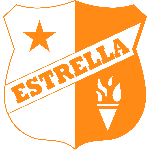








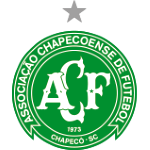


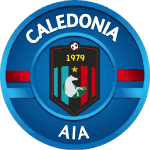





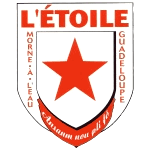


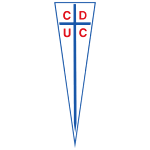




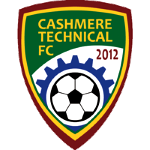










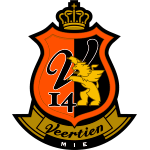
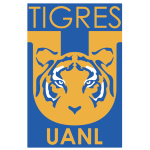







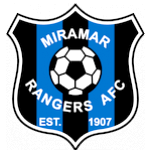




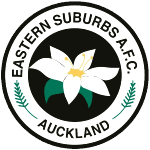
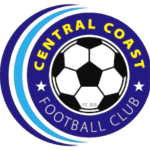



















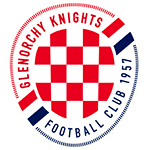





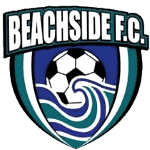


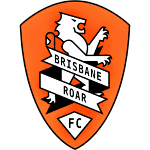

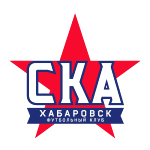



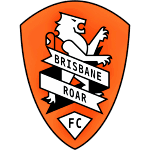





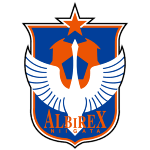








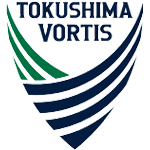
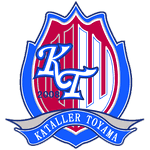












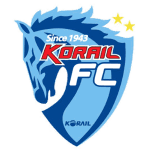



















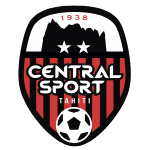
Serie A
BETTING >